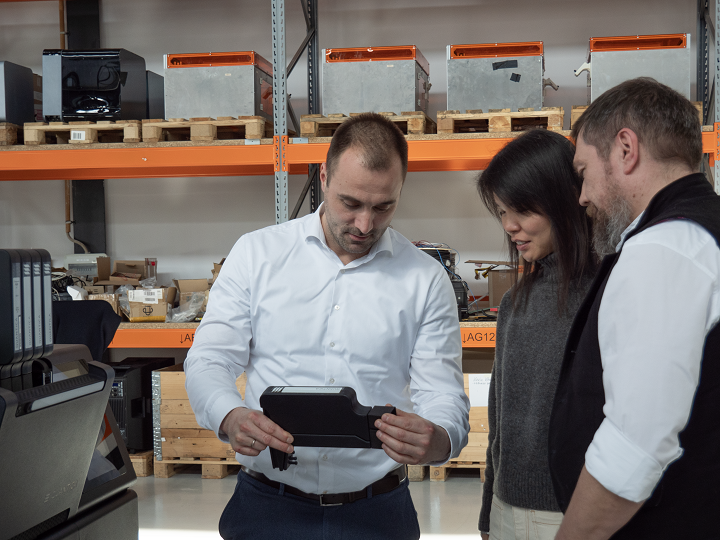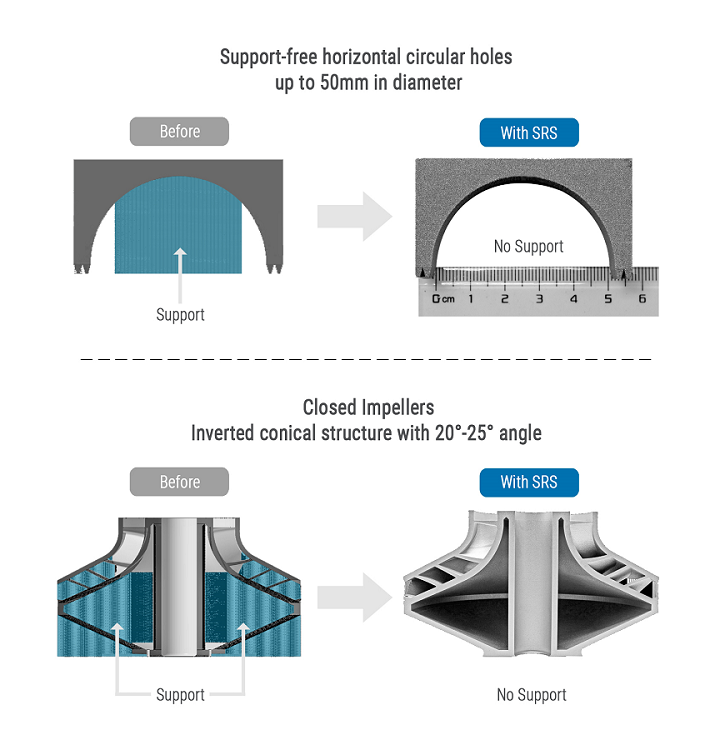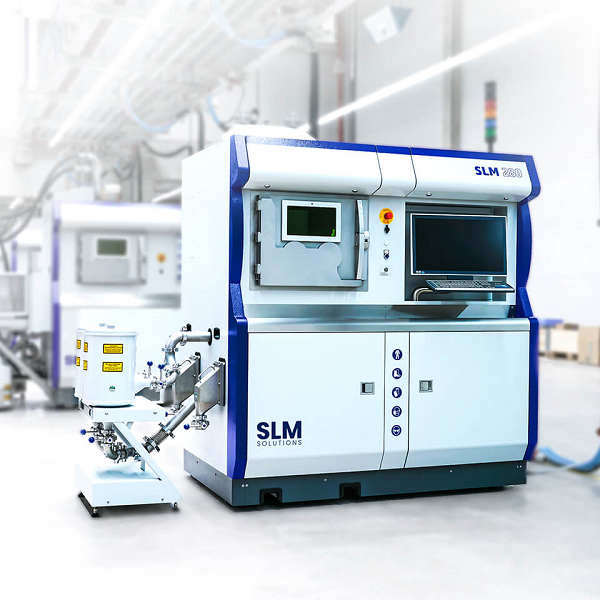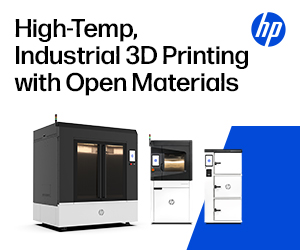May the 4th be with you, fellow Star Wars fans! In this edition of 3D Printing News Briefs, Quantica and ALTANA Cubic Ink are working together to expand future inkjet materials, and Farsoon Technologies introduced the Support Reduction System for its metal PBF. Speaking of metal 3D printing, the iLAuNCH Trailblazer project installed its first multi-metal 3D printer at CSIRO, and Incodema3D has acquired four more EOS printers—bringing the total up to nearly 30! Finally, a Macintosh lover used 3D printed to create a working replica of the Mac Plus.
Quantica, ALTANA Cubic Ink Partner to Drive Inkjet Materials Innovation
Germany-based advanced AM firm Quantica is partnering with fellow German company ALTANA Cubic Ink, a leader in specialty chemicals, to expand and improve innovation of new materials in 2D and 3D inkjet printing. Their cooperation will have ALTANA’s Cubic Ink High Performance Materials brand providing materials to act as a starter kit for people working with the Quantica NovoJet OPEN 3D printer, showcased at formnext 2023 and able to print a wider range of high-viscosity materials. The ALTANA starter kit will offer a base material to users without one, and looking for somewhere to begin.
“We are excited to work with a partner like ALTANA and its Cubic Ink® brand, combining their material expertise and our technological capabilities, we see this as a complimentary alliance. They understand the opportunities and obstacles inherent in inkjet and multi-material additive manufacturing, and are excited to team up to offer the industry new materials,” said Grace Chang, Quantica Head of Product Management and Partnership.
Farsoon Introduces Support Reduction System for Metal PBF
At last year’s TCT Asia, Farsoon Technologies, the leading supplier of industrial polymer and metal laser sintering AM technology in China, showcased its SRS Technology. Its Support Reduction System (SRS), which uses significantly fewer supports than typical metal PBF processes, is now available on the global marketplace and is applicable to all Farsoon metal PBF platforms. This system is obviously meant to help fix one of the technology’s most difficult aspects—internal stress and deformation during cooling, which can lead to part failure, especially when it comes to overhanging structures. Farsoon’s SRS Technology enables the printing of inverted conical structures with a 20°-25° angle, as well as support-free horizontal circular holes up to 50 mm in diameter, as illustrated above.
The reduction of support structures for parts with low-hanging angles will save on material costs, minimize potential part damage, and decrease both printing and post-processing time. The technology uses Farsoon’s proprietary slicing software and adaptive intelligent scanning strategies to accurately control local part temperature and energy input, enabling high part density and an improved ability to form low-angle structures. But more than cost and time savings, SRS Technology ensures more design freedom. Farsoon has successfully used its minimal support technology with a variety of real-world applications—including valve bodies, nozzles, and closed impellers—and materials, such as high-temperature alloys, stainless steel, and titanium and aluminum alloys.
Nikon SLM 280 Commissioned at CSIRO for iLAuNCH Initiative
In the fall of 2023, Australia’s iLAuNCH (Innovative Launch, Automation, Novel Materials, Communications, and Hypersonics) initiative to revolutionize space technology using additive manufacturing kicked off its inaugural Trailblazer project. Now, a new multi-metal 3D printer, the Nikon SLM 280, has been commissioned and installed at CSIRO’s Lab22 facility. iLAuNCH is meant to make space missions more affordable and efficient with 3D printed lighter, faster, and more robust aerospace components, and this selective laser melting (SLM) system should definitely help. Typical manufacturing costs for complex geometries, like what you’d see in rocket engines, are often very high, but this multi-metal printer makes it possible for the oxidative resistant layer to be printed continuously side-by-side with the structural metal, in just one go—ultimately reducing costs and speed up production.
“This capability is the first of its kind as a production machine in Australia, in fact the southern hemisphere, and iLAuNCH is pleased to open up new manufacturing possibilities for locally made products,” said iLAuNCH Trailblazer Chief Technology Officer Dr. Joni Sytsma.
“Australian companies manufacturing satellites and rockets now have a real advantage to optimise their designs and improve performance, all made with a reduced lead time right here in Melbourne.
“We anticipate that the additional capabilities of this technology can also bring forth novel super alloys that are capable of maintaining ultra-high strength at the ultra-high temperatures that hypersonic vehicles need to survive.”
Incodema3D Acquires Four More EOS Metal 3D Printers
With the acquisition of four more EOS M 300-4 Direct Metal Laser Solidification (DMLS) 3D printers, industrial 3D printing manufacturer Incodema3D has brought its total fleet of EOS metal 3D printers up to 28, and projects to add even more before the year is out. This makes the company, with its 60,000-square-foot facility in Freeville, New York, one of North America’s largest AM players. Incodema3D purchased its first EOS system in 2012, and has continued growing, consolidating its whole business around EOS metal AM and investing in the necessary equipment for pre- and post-production as well. As its focus is on production for aerospace, defense, and other industrial applications, the EOS M 300-4 is a good choice, with its 300 x 300 x 400 mm build area, four 400w precision fiber lasers, dual material recoaters, and an increasing number of available materials, including stainless steel 316L, titanium Ti64, nickel alloys IN625 and IN718, and more.
“The Incodema3D team is a great example of what can be achieved when extraordinarily talented people work together towards an aspirational goal,” stated Glynn Fletcher, President of EOS North America. “We continue to be blown away by what Incodema3D is accomplishing with EOS systems. They are a wonderful example of AM success, and we are grateful to be a part of their success story and look forward to helping them write their next chapter.”
Brewintosh Plus: 3D Printed Working Mac Plus Clone
German Macintosh enthusiast and collector Kevin Noki was unable to find a working 1986 Mac Plus computer, so he decided to 3D print himself a working replica of the third Apple Macintosh design! He was able to find one an original eBay with a missing floppy disk drive and broken power supply, but rather than just adding a Raspberry Pi, Noki used the computer as a template to build an actual working clone. He spent over 40 weekends measuring and modeling at least 40 individual parts of the Mac Plus in Autodesk Fusion 360, and 3D printed these exact copies one at a time, which took about 48 hours. Noki also used an Arduino-controlled motor, which he coded himself, to augment a USB floppy drive reader, and installed it on the replica, then soldered and wired external speakers. He also created replicas of all the original stickers, labels, and raised-text stereotypes, and dyed the 3D printed parts to match the color scheme of a Mac Plus case. This project, which required a large and varied skillset, was an absolute labor of love!
“We are talking a properly sized, colored, and textured box, which takes wall power, swallows 3.5-inch disks, works with both telephone cord and ADB Apple keyboards and mice, has a screen dimmer, and makes the startup sound (the beep, not the chord),” Ars Technica said about the impressive Brewintosh Plus.
Subscribe to Our Email Newsletter
Stay up-to-date on all the latest news from the 3D printing industry and receive information and offers from third party vendors.
Print Services
Upload your 3D Models and get them printed quickly and efficiently.
You May Also Like
3D Printing Predictions 2026: Industrial Production in Metal Additive Manufacturing
The industrial metal additive manufacturing world is splitting, with commoditization and lower-cost parts driving the production of millions of components for consumer electronics, machinery, dental, and beyond. Meanwhile, large parts...
How 3D Printing is Making the World a Better Place, One Medical Innovation at a Time
One of the most significant sectors for 3D printing applications is the healthcare field. According to an AM Research report, the 3D printed medical device market is estimated to reach...
A Year in 3D Prints: A Visual Journey Through 2025 in AM
2025 was a year of milestones and experimentation in additive manufacturing (AM), marked not only by technical progress but also by the mergers, acquisitions, and restructurings that reshaped the industry,...
3D Printing News Briefs, December 17, 2025: Standards, Ballistics, Dental Aligners, & More
Today’s 3D Printing News Briefs is a bit of a mixed bag, including stories about standards, ballistics 3D printing, dental aligners, and more. Read on for all the details! DNV...


































